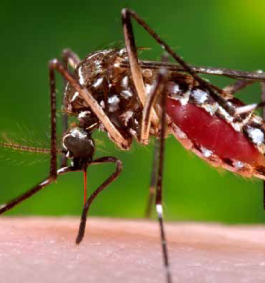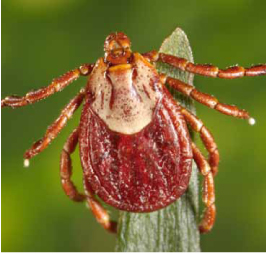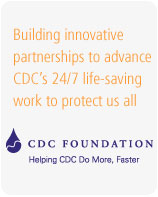Zoonotic Disease: When Humans and Animals Intersect
Zoonotic Disease: When Humans and Animals Intersect [PDF - 780KB]
What are zoonotic diseases?
Zoonotic diseases are contagious diseases spread between animals and humans. These diseases are caused by bacteria, viruses, parasites, and fungi that are carried by animals and insects. Examples are anthrax, dengue, Ebola hemorrhagic fever, Escherichia coli infection, Lyme disease, malaria, Plague, Rocky Mountain spotted fever, salmonellosis, and West Nile virus infection.

How do you get zoonotic diseases?
People can get zoonotic diseases from contact with infected live poultry, rodents, reptiles, amphibians, insects, and other domestic and wild animals. A common way for these diseases to spread is through the bite of a mosquito or tick. People can get diseases in most places where they might have contact with infected animals and insects, including:
- Animal displays
- Petting zoos
- Pet stores
- Nature parks
- Wooded and bushy areas
- Farms
- County or state fairs
- Child–care facilities or schools
Who can get zoonotic diseases?
Anyone who has contact with animals can get a zoonotic disease, but people may be more at risk than others. These include people with a weakened immune system, children age 5, the elderly, and pregnant women.
How to prevent zoonotic diseases
 Be aware of zoonotic diseases and your potential for infection
Be aware of zoonotic diseases and your potential for infection- Wash hands thoroughly and frequently
- Avoid direct contact with certain animals and their environment
- Closely supervise children to ensure they wash their hands properly and avoid hand–to–mouth activities (thumb–sucking, eating, and use of pacifiers) after animal contact
- Use EPA–registered insect repellents that contain 20% or more DEET (N, N–diethyl–m–toluamide) on the exposed skin for protection that lasts up to several hours
- Use products that contain repellents (such as permethrin) on clothing. Treat clothing and gear, such as boots, pants, socks and tents
- Look for and remove ticks from your body. Parents should check their children for ticks
- Limit the number of places around your home for mosquitoes to breed by getting rid of items that hold water
Interesting facts about zoonotic diseases
 About 75% of recently emerging infectious diseases affecting humans are diseases of animal origin, and approximately 60% of all human pathogens are zoonotic.
About 75% of recently emerging infectious diseases affecting humans are diseases of animal origin, and approximately 60% of all human pathogens are zoonotic.- Tick–borne diseases, including Lyme disease and Rocky Mountain spotted fever, are serious public health problems, infecting tens of thousands in the United States each year. CDC is working closely with local communities, developing innovative control approaches and researching improved diagnostics.
- Almost all persons infected by rabid animals will die if not treated appropriately. Dogs are responsible for most human rabies deaths worldwide, but the public health threat of canine rabies has been virtually eliminated in the United States.
- There have been 1.5 million West Nile virus infections since 1999. 2.5 billion people are at risk for dengue in more than 100 endemic countries with 50 million cases of dengue fever each year.
For more information on zoonotic diseases, visit www.cdc.gov/ncezid or call 1–800–CDC–INFO.
Get email updates
To receive email updates about this page, enter your email address:
Contact Us:
- Centers for Disease Control and Prevention
1600 Clifton Rd
Atlanta, GA 30333 - 800-CDC-INFO
(800-232-4636)
TTY: (888) 232-6348 - Contact CDC-INFO




